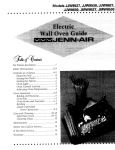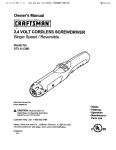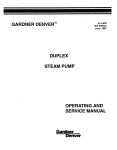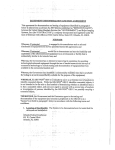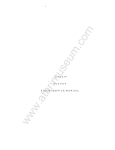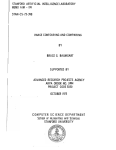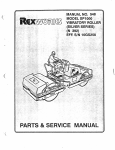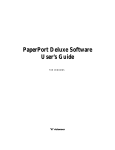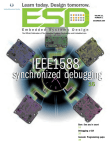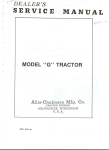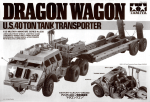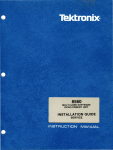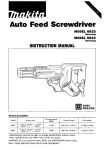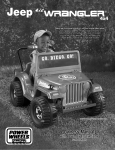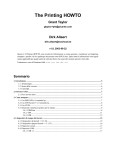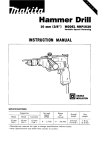Download TFspecs & info - Chrysler 300 Club International, Inc..
Transcript
,,"~
l,ET1TER SERIES 300 TllANSMISSIONS
---,
-, ,-,
byGeo rge Riehl
_IIJ
Having rebuilt hundreds
aluminum transmissions
.
tmnsmissions would work like they should from the
of the cast iron and
factory.
through the years, I have
I had remembered
a friend that was the
found many are not the originals that came with the
300 as it left the n~ctory.
chief instructor for AMMCO Transmission, shops
across the U.S. He retired from AAMCO atler 35
During the car's life, a transmission wouldUail
for one reason or another. pormany owners that
years with them. He lived in a nearby town and I
called him up. "No problem" he said to bring a
transmission over and he would give me· the
.
had transmission
problems
during
the warranty
p~:riod, Chrysler dealerships would make repairs or
1reme cases, a replacement unit. When
install, in e....•
"course."
In a few days and about 27 hours of take
the car was out of warranty,
that I \,."asready to go it on my own, and of course,
he would always be on hand for any help 1 needed,
apart, put back together many, man)' times, he felt
(\ local transmission
shop would be selected.
Many of Ilhese shops
would have a "rebuilt" unit on the shelf Because
1 did canter with him many times,
Hut back to the
all the transmissions looked the same physically on
original theme of this article, I will list all the
the outside, many times the replacement unit came·
orilginally from a Dodge, Plymouth,
DeSoto,
Imperial or non-300 Chrysler and Dodge truck.
1 have found that through
the ye:ars,
original transmissions
notations:
approximately
transinissions,
\'1 ~ 0.:S" qCo
1955 Powcrflite
1956 Powerflite
10%
were
original
300
and the faet that when an original
300transmissioll
was rebuilt, the proper job was
not done according to what the factory specified ..
for the 300s, with various
(J
3/t1~~
1/1673170
it 676 190
i
Y'
It '1958 Torqueflite
f:uiiy
5"7/S[{
'l~~~(,.
67 De.
go;x
1956 Torquetllite #1823593 1957 Torquetlite # 1854123
V"'-.
sz;=-
+
C.A\I<,.
-~
# 1854123
That is, many \vere rebuilt to (II "normal"
transmission.
In other words, closer tolerances,
1959 TOl'quenire
# 1854) 67 up to SIN 1285857
1959 Torqueflite
;; 1949267 after SIN 1285857
pf()per~lmounts of friction and steel discs, band
•
adjustments,
rear clutch (low gear) spring,
governor and line pressures were not rebuiH or
l1\cl:ory
replaced
according
to
Chrysler
1960 Torqueflite
#1949808
1961 Torquellite
#2204693
1962 Torquellite
(aluminum)
#2205190
1963 Torqueflite
(aluminum)
#2464426
i 964
(aluminum) 4bbl #2464734
specifications.
These service bulletins \vere not
available to transmission
Torquellite
(console shin)
shops.
ram
#2464735
The "'rebl1ilt"/"replacemen£" transmissions did
nOILalways hold up and generally did go bad just
1965 Torquctlitc
(aluminum)
#2466113
up to SfN 1589110
oVler the war~anty
1965 Torquetlite
(aluminum)
period. This made many 300
owners unhappy with their "Chrysler" transmissiion.
I personally
had this silllCltion
l60-L
aner
#2466148
SIN
1589J 10
on my 1957
300C. Within one month in 1963, a slmlP had to go
through it three times. The third time it went bad,
within 5 miles, I told them. to contact
my local
Chrysler dealer. They got the correct information
and the transmission has worked as it should.
During the time] was restoring my 1961 3000
coupe and my 1960 .300F, I was concerned
if my
Note:
'56-'58
bodies.
10
early ·1959, the shift cable was the same as
TorqueHite and had three piece valve
In mid 1959, the shift cable used the
"adjustment"
wheel like '60 and up and had a 2-
piece valve bQdy.
Tl)ere were additional numbers after the part .
number, These were serial numbers that were
I
.~
5tamped inlo thl~ cast iron housing to ider1lil~' the
numerical
progression
!~~
warranty
~~
When a '56, '57, '58 or early '59transmissioll
replaced under warranty at the Chrysler
was
3 f+
~~alersh~~c
aluminum
with some "green"
lop orthe bell housing.
repair or replacements.
( !J"
:.
These
lO ll1anllf~lcturil1g dates tor use in
numbers related
~
of the transmissiolt
were never P'lIilltcd.
Later 1962-65 transmissions
were feO natul'Hl
engine paint
011
the
1966 and up tr~lJ1smissjons
showed no paint at all.
Nothing is wrilten
So there you hav!;' it.
ill
stone as there are always some variations Chrysler
I
L1~litwas ordered under
part number J 738227::;)\'lth a note to o'rdcl
g.overnor weiflht 1823708 and 1823709 springs
'lent
Since t 111[; '56 through
early' 59300
t ransmissiions"
were designated lor the production of 300s, the
1823593 and 1854123 transmissiollswere
not in
~~~..=:::=----.-=:==--
came up with through
One
interesting
Iransmissions
body
t
the years.
ill
note
1964, Torquellilc
I
hat used he console
shiH pattern
~hin.t he
was the reverse
mounted push-button gear selector.
valve
of the dash
Ifhy
chance a
as
push button tmnsmission was used in a console car,
replacement units that "",ere stock
itt~ms lor Dodge truck.
There \~(ere many internal differences lhr the
first gear would be in the "park" position. All
shifting patterns would be in exactly the reverse
"stock" inventory. The 1738227 was designated
"l1eavy duty"
300 transmissions
and it gets very involved. Front
and rear clutch packs have more friction discs.
Front cushioll spring is eliminated, kick down lever
is .ora different ratio, rear clutch spring is diflerent,
pattern of a push button transmission valve body.
Console shifler in the first gear position would be
in the <·park." So
proper transmission
it
is vcry important that the
be used f(Jf rhe 1964 300
console shin assemblies.
The Ilrst year of "park"
acc:ulllu]alor spring is eliminated, line pressures are
higher, dutch pack clearances are doser, band
selector
adjustments are tighter and governor weights and
springs are different.
All 1955 through 1960 transmissions and bell
In 1961, the
housings are painted aiuminulll.
moullted on th{~ end of the tail shan housing and
up used a cable assembly that opermed off the dash
console or shin lever (I (65) and actuated a
transmissions were left natural cast iron along with
the emergency brake drum. The pans were len
"ratchet"
housing.
natural steel color and the bell housing and tail
emergency
shaft were lell natural aluminum.
shoes.
In 1959 through
196 J, the bell housing had an "over spray" of black
engine paint about 8-10" on the LOp and tapered
down the sides about 3/4 the way down. Reason
lor this is that the engine was painted black with
the lranslbell housing attached to the engine prior
10
having the assembly installed into the car.
Rebuilding
COJ1lle10 fn!; in
these transmissions, many of them
various l:olor.s. The reason for this
was that many transmission
I}(H1icular "company"
rebuilding shops had a
color to identify their rebuilt
units along with some "invoice"
~omewhere on the transmission,
icllow,
number st,lmped
Blue. green,
black, red and gold were some of the
:olors. Very few were painted aluminum and many
was used in 1963 and up.
Prior year
transmissions used an emergency brake drum
was activated by a "latching" lbot pedal.
1963 and
locking assembly inside the tail shan
1963 was the first year of a foot lever
brake that applied the rear axle brake
In essence, 1963, 1964 and 1965 had two
forms of locking the car in a stationary position,
rear brakes applied and transmission
locked
internally.
As a flIrt her note about 1956 through 1964
transmissions. most fluid leaks occur fram the shin
cable.
develops
The
.outer rubber
cracks
or
or plastic
ruptures
housing
that allm\!
the
transmission lluid to travel up the cable and leak at
the failure. This generally occurs when the car sits.
lor a period of time and the fluid drains from the
converter and clutch packs and Iluidlevcl
inside the transmission.
rises
There is also· a possible leak through the shiH
cable "0" ring where the cable goes into the
::2
transmISSIon.
II gets hard ii-om heat and age. It
will or can leak while the car is driven.
The .seal
!!Q.wnshifl.
only. as fluid lev!;:1never gets thm high up in the
tralilsmission due to "drain down."
or FA.
is also quite
converters
a difference
in torque
----
and bell housings. __1_95_6.-!hrough mid
1959. used a "thicker" --torque converter.
.--~"'
"---
Mid f959
~ollgh
1961 cOllveners were ·'thinner."
In
accordance with the respective convert(;r. difTcrent
bell housings of overall length were used. The I_~
cOl~ncr
that
]3' in diameter.
Late
1959
through
1961
was _____
,.......
_-_x
_
converters were 12" in diameter. Thickness of the
.J.b..r.ough early 19:;9 used a torque
_._------------------_.early converter
19591/2
was about
.~J5/16"
-_.
than the later
This also show!> ~bat the
up converter.
through 1959
l" shorter
If:! Torquctlite
'56'
bell housings measure
fTom mounting to the engine block to the
mounting.
Late 1959'/2 bell housings
transmission
~~:
8" in length.
This means thaI converters
and
bell housings cannot be interchanged.
1059'12 ~bell housings
c<lstinu
~ 1956 through
H
- ~~
number
is 163079~.
1959
V:!
lip Jlcll housings
ca~.tjng number is 173643~.
There are some differences in tailshaH housings
Most all Dodge, Plymouth, DeSoto and Chrysler
housings are the same except for output shaft
supports.
1955 through
ball bearing,
1959
Yz
1959
!Iz
taii! shans us~~da
up used a bronze bushing.
Output shafts cannot be interclmngc:d
differences.
Imperial output
hOI_.ls_il_lg_JS_· _c_a_n_n_o_t.
_b_e __
under these
shafts and tail shaft
t_ls_e_d_o_n_3_0_0._s_al_!d_o!1.1~!:.-
Using that
"kick-down~' or "get away" gear (2nd or I sl) or
that goes into the housing under the external kickdmvn lever is not a fluid seal. It is a dust/dirt seal
There
-
lever/rod geomelly of the Imperial.
lever on any other model car wilt result in lack of
The fluid to use in these trallsmissiQI1s i~ type F_
I prefer type F when availablc. Type "A"
suffix "A" should not be used and is fortunately
not readily. available.
Do not use Mcrcotl or
------------'
Dextron, as they \\/ill result in early. transmission
~..
1:1ilure. Chrysler
put out a special
tech bulletin
to
technicians to use Type F. even in the A83] '1speed transmissions .
Transmission tluid filtering: In 1955 through
1961, Powertlites and Tor'll/cflites used a screen
attached to the valve body.
It was similar In
"window
screen" mesh openings and only
prevented large particles fi'om entering the valve
bod:y. Anything smaller than 1/16" was able to pass
through. Not very e'fficiem. In 962 and 1963 an
in-line remote tilter canister was used in the out
J
now side of the cooler line
--x
l\i~was
11100e
cienl. Then in 964 an inte nal 10 micron lilt
wa~
J
used. internally attached
to
t
l1uid pick
elli-
orifice
of the valve body. A much better
. 1'1I1g system.
All I%4 and lip automatics used this type tilter.
Oh, one other thing. the 196 ~ Torquellite is..
unique 101' that year only. It u:;es a "new" style
reverse
1 fiiction
bane!.
It is paper
lined
and has thinner
materi<!! and can only be used with the 196
J
reverse planetary drum. The drum is of larger
band ...--_
use
\vill
diameter then 1960 on down.
Earlv
-----_._------~.,
..~.."~"-*.,,--~~~
...:._..~-~.-.~.~,~
.....
__ ._,
~ot last long if'iinstalled, acommon
I1lult with some
rebuilders.
Chl)'sler, Dodge, Plymouth and DeSoto models.
Reason is that due to the different loca'rion of
up the governor compensator
Then in
plug and retainer ~£e eliminated ill the valve body.
Imperial rear cross members, the speedometer gear
location is more forward than all the other chassis.
The modification
govemor function.
---------------------'"--'------------------_.---COmplete
Imperial
transmissions
t.:an
bC;:;~~1lh
th~ only differel~ice being th~ _.}~~!'.t.i,L.1~
"of _~,~
J '~
~---_.
improves "Iag" time or the
1\
1958 valve body
can be used
.._~,-,..-,--~,._._
,,,,,",---~-~,,,,_
__
ill lilt; I957 for slight improvcment
used in 1956.
..
_-~.
.•.
but call1lot be
The cable will attach with no
As shown in the service manual, put on your
One other notation is to be made; !llC extern~l_
white shop coal, install your tranny on stand C32&0 along with tool X3427, C-]529 and go to
kick-down lever on the Imperial is about ilL
longer than on all other models. Tbis is due to the
work in your heated, ale shop. Everything is now
perfect. Are we still in Kansas, Toto?
•
spt~edometer gear:
problem.
3
~I'RANSMISSroN THROTrLE
LINKAGE
ADJUSTMENT
(continued)
it is 115 degrees to the horizontal, as shown in Figure 9. Proper pedal angle
is obtained by adjusting the accelerator pedal to acc:elerator shaft rod length
at the ball joint located on the accelerator pedal end.
Check for any binding
in the throttle linkage and correct if present.
All TorqueFlite transmission
equipped cars have a throttle linkage adjustment at the transmission throttle
operating lever.
The purpose of this adjustment is to allow for permissible
variations between body and engine locations in manuf'acturing and should not
·be used for makj..ngthe throttle linkage adjustment.
If, after ma.king adjustment, satisfactory performance is still not obtained,
check to see if the correct accelerator shaft lever assembly has been used.
rrhe shaft lever must be 3 l/~. inches in length between center line of hole
diameters (2 7/8 inches when used with two barrel carburetor).
11/henlinkage is correctly installed, a clearance of 3/4 - 1 1/8 inch should
exist between dash panel and center of accelerator shaft to carburetor rod pin
as shown in Figure 10.
GOVERNOR
ASSEMBLY
Should it ever become necessary to
replace either the governor weights
(inner or outer) and/or weight
spring (Figure 11), it is essential
that the followj.ng parts be used:
Part Name
Outer Weight
D:mer Weight
Spring
Part
Number
1823'726
1636462
1823709
Be sure to recheck governor pressure.
See Governor Pressure Chart - Next
Paragraph.
PRESSURE
Fig.
CREeKS
Pressure check procedures remain unchanged,
are given in the following chart:
GOVERl"J'OR
PRESSURE
-----------------
f--
11 -
except
Transmission
Governor
Outer Weight
and Spring
for governor
values
which
CHART
48-53
21-2~
Vehicle Speed 71-77
(in miles per hour)
f--~ .•31:1 A]IJ~ RATIO)
·
essure
Governor
PI'
15 pSI
50 psi
75 psi
- 14 -
,;r
('
e
(6)
Adjust engine idle to 450 to 500 r.p.m. Adjust the transmission throttle
valve linkage accorcLing to the instructions in the 1959 Chrysler and
Imperial Service ,ManualSupplement.
(7)
The "bandadjustments of the new Torque-Flite Transmission are performed
in the same manner as on l)revi.ous Torque-Flite Transmissions except the
kickdown "bandadjusting screw is "backedoff two turns for the C-300E, and
two and one-half turns for all other 1959 Chrysler and Imperial models.
The low and reverse "bandadjusting screw is backed off two and one-half
turns on all models"
TESTPR1!:SSURE
SPECIFICATIONS
The :folloioTingare the test pressure specifications for all Torque-Flite
missions aft.er transmission seriaL number 1285857:
'
Trans-
LIliJEPHESSURE
CHART
Pl1.shButtonPosi tion
Line Pressure
Engine Speed
...---'
"NlINeutral
lIDlIDrive
"211Second
"lll
1~~00r.p.m.
_I- /£5'70
85-95
1200 !C.p.m.
~ ~. . 85-95
1200 r.p.m.
85-95
/j11-1" ~~)~~
1200 r.p.m.
joe:)
1600 r.p.m.
~ L-240
~~:95
GOVEJRNOR
PRESSURE
CHART
. .,.,.-
Low
lIR"Reverse
e
.
p.s.i.
p.s.i.
p.s.i •
p.s.i.
p.s.i.
(Chrysler MC-l, MC-2)
(Chrysler MC3,Imperial MYl)
Pressure
Pressure
Pressure
Push Button Position
19-22
m.p.h.
44-50
m.p.h.
64-70
p.s.i.
23-28
3-5
p.s.i.
73-79
75
p.s.i.
S:p'eed
Speel~
15
p.s.L
39-43
p.s
••i.
50
p.s.i.
50
p.s.1.
75
p.s.i.
25
m.p.h"
70
40
m.p.h"
"lll Low Chrysler MC3-300(C-300E)
10 m~p.h. ~ Speed
"2" Second
15 p.s.L
19-21 m.p.h"
"D" Drive
42-49 m.p.h"
liD" Drive
70-77 m.p.h ..
Push Button Position
1I1"LoyT
1I2"Second
liD"Drive
ItD"Drive
COMPENSATED
TEROTrLE
Transmission upshifted to second or ~Lrect
10 - 16 p.s.i.
=
PF,ESSlj'RE.
Transmission throttle
lever closed.
PEAR CLUTCH PItESSt.rrtE
WlLi.letesting line pressure, rear clutch pressu.re Dot to "bemore than 15 p.s.i.
belo"" line presSllTe in lIDItDrive and. "n" Reverse"
UJBRICA.TION
e
Lubrication press-Jxe
mD..st
be 10 p~s.i.. or
IIJ;:;SSLIP,E
mc,re
B.t
800 r.p.ill. in. "D" Drive position.
C::-",~7/~~
C. T. McCLURE
Director of Service
•
CHRYSLER
CORPORATI01~
CHRYS!-ER DIVISION
Inoo E. JEFFERSON AVE.
IDETROIT SI, MICHIGAN
SERVICE
BULLETIN
DService Mgr. 0 Shop Foreman!
I Parts Mgr.
DMechanics
JWle 13, 1957
No. 1003-CH
CORRECTION
TO ALL CHRYSLER AND IMPERIAL DEALERS:
Please make the following correction to Paragraph 6, SPECIAL
LOW TEMPERATURE RECOMMENDATION~. Page 2 of Service
Bulletin No. 1003-CH:
6.
--
SPECIAL LOW TEMPERATURE RECOMMENDATION: If
diffieult starting is encoWltered when the average temperatures
range consistently below - 100F, replace one (1) quart of
fluid with refined kerosene .. This service should be performed
only once during the low temperature
season. Thereafter,
necessary
replenishment
of Power FlUe should be with
Automatic Transmission FJluid - Type ~'A".
Automatic
Transmission
Lubrication
&
Servicing
Instructions
CHRYSLER &
IMPERIAL
£10:~
R. B. TEIPER
Director of Service
CHRYSLER DIVISION
•
ITRANSMISSIOl
All
Power Flite
And/Or
Torqueflite
Equipped
Models
-----------.-------- - -----------------------·_---_·,----_·_--·--~I
"IMPORTANT: This bulletin contains valuable infDrmation and was prepared at
cDnsiderablE~expense ta be af service ta YDU.Failure tD UB,ethis infDrmatian may
ClOstYDUgDodwill and money. We suggest that you insure it 1s read by all thDse
cDncerned
and then fUed for future reference in YDur
Service aulletln binder."
-----~_._------------------------------------~------------------------------------------_
.. --------
14901
P"INT.D
IN U ••.••••
TO ALL CHRYSLER AND IMPERIAL
DEALERS:
No.
58-3l
The follomLng information may be of assistance in selecting the correct
speedometer drive pinion for the various axle ratios and the tire sizes
that are available:
X Ratio
No.
of
X
X
l6
X
Tire
XI XX
X Pinion
XII 3.
X II X Size
X
3.3l
l8
X .b.3.2-:h2L
2l
X
20
~73
~\.1.8
Axle
19
&2Q.
I X ll.OO
l7
l636406
No.3.l5
Teeth
~
SPEEDOMETER
DRIVE
PillION
CHRYSLER
·AND
IMPERIAL
C..7~d~
MODELS
C. T. McCLURE
Director of Service
CID~YSLER DIVISION
e
22202
TO ALL CHRYSlERAND IMPERIAL DEALERS:
This bulletin
cancels
January 30, JL958.
and supersedes
Service
Bulletin
#58-31,
dated
No. 58-46
The following
information
speedoneter
drive pinion
that are available:
JJJaY
for
be of assistance
the various axle
in selecting
the correct
ratios
and the tire sizes
REARAXLE RATIOO
2.92
2.93
TIRE SIZE
e
67 or 17
16
8.00 x 14
3.18
3.36
3.15
3 •.31
3.54
NUMBEROF TEETH IN SPEEDOMETER
PINION
- 17
:l636406
:l636408
1636410
:l636409
:l636407
:l732ll3
20 19or
18 20
19
18
*!.~ 17
or
*12
8.50 x 14
PAHTNUMBER
21
3·73
SPEEDOMETER
PINION
DRIVE
21 21
2020 or 21
'*20
9.00 x 14
9.50 x 14
ll.OO x 14
NO. OF TEETH
DESCRIPTION
16
17
18
19
20
21
*:NOTE:
Speedometer
Where two pinions
preferred ••
can be used,
-the underlined
AND
Pinion
II
II
II
II
II
II
"
II
"
CHRYSLER
IMPERIAL
"
number of teeth
is
c~..z~~
e
C~ T.
McCLURE
Director
of Service
CHRYSLERDIVISION
MODEIB
TO ALL CHHYSLER AND IMPERIAL
DEALERS:
Feb. 6, 1958
No. 58-34
e
If you experience excessive noise in Torque-Flite Transmissions during
, 'breakaway" push button "D" position, especially when coasting or
deceleration, it may be caused by the condition of the needle roller thrust
bearing, the sun gear rear end thrust face, and the front thrust surface of
the intermediate shaft flange.
TRANSMISSH
When inspecting the parts of a disassembled Torque- Flite Transmission,
carefully examine the needle roller thrust bearing for wear, scores,
looseness and cage wear or damage. Install a new bearing if necessary.
Excessive
Inspect the sun gear rear end thrust face for wear, pits, scores or
unevenness. If the wear pattern on the sun gear rear thrust face is not
uniform, or U th.e thrust face shows signs of pits, wear or scores, install
a new sun gear.
Inspect the front thrust surface of the intermediate shaft flange for wear,
scores, pits or breakthrough of the case hardness. Install a new intermediate shaft if necessary.
Noise in
" Breakaway;
Inspect the intermediate support bushing. If bushing shows definite wear
pattern at front and rear edges and 180 apart, replace the intermediate
support and carn assembly.
Inspect the intermediate shaft rear clutch feed circuit seal ring lands. If
lands are worn by contacting reverse sun gear inside diameter, replace
intermediate support and earn assembly.
Chrysler
and
Imperial
Inspect all the thrust washers in the transmission. Install new washers if
necessary. Be sure to obtain the correct end clearance on assembly as
described in the 1958 Chrysler and Imperial Service Manual.
All 1957
CJ~/J7?C~
C. T. McCLURE
e
Models
Director of Service
CHRYSLER DIVISION
&
1958
Torque- Flit,
Equipped
22033
TO ALL CHRYSLER AND IMPERIAL DEALERS:
If engine coolant is found in the transmission, it may have entered
through a leak in the transmission cooler tube located inside the
radiator lower tank. If the car has been driven, transmission oil
will also have been forced into the radiator cooling system, and a
reduction of transmission
oil level will eventually occur. To verify
a cooler leak, the cooling lines should be removed at the radiator.
Connect a pressure gauge to one cooler outlet. To the other, connect
a source of air pressure so that it may be trapped in the cooler.
If the cooler and all fittings are leak proof, the gauge reading will
remain constant.
CAUTION: Do not subject cooler to more than 50 psi. Do not
,:!se pipe sealers that will get into the transmission
oil circuit.
e
e
No. 58-41
When a leak is definitely detected, the following steps should be taken:
1,
REPAIRING THE COOLER LEAK:
1.
Remove the radiator
2.
Remove the radiator
lower tank. (This should be done by
experienced radiator repair personnel.)
3.
Test the cooler with 50 psi air pressure
4.
Repair the cooler leak using silver solder, or high grade
radiator repair solder. If the cooler cannot be satisfactorily
repaired, a new cooler should be installed in the radiator lower
tank and .soldered with a high grade radiator repair solder.
The new radiator lower tank transmission coolers are available
under the following part numbers:
Part No.
Models
Center to Center Dimension
1754877
C75-LC1-LC2
6"
1832240*
C76-C76-300-IM1
10"
LC3-LC3S-LY1
*Los Angeles built New Yorker models C76 and LC3 require
coolers of 9" center to center dimension, however, cooler
Part No. 1832240 may be used by relocating one outlet connection
and by soldering a piece of sheet brass over the former outlet
opening in the radiator lower tank.
(Over)
core.
in water.
CHRYSLER
AND
IMPERIAL
ALL
1957 & 1958
TORQUE" ..
FLITE' ..
EQUIPPED
MODELS
22743
(~HRYSLER CORPORATIOr~
e
CHRYSLER
DIVISION
12.200E. JEFFERSON
AVE.
DETROIT :lit, MICHIGAN
SERVICE
DService
Mgr.
BULLETIN
0 Shop F'oreman DParts
Mgr.
DMechanics
TO ALL CHHYSLER DIRECT DEALERS:
11
There is a possibility that on some 1H57 Torque-FlUe Transmissions
built prior to code letter "Jt"" that the reverse servo will cock over
and subsequently
miss the pilot hole on the reverse band lever.
Whenever there is a failure of the reverse servo piston, Reverse Servo
Piston Guide Part No. 1824474 must be installed to prevent a recurrence
of the failure. (See Figure 1)
-
May 2, 1957
No. 1015-CH
TRANSMISSION
REVERSE
SERVO
PISTON
ALL 1957
TORQUEFLITE
TRANSMISSIONS UP
FIGURE 1
TO TRANS-
Further, at any time a 1957 Torque-Flite Transmission built prior to
code letter "F" is disassembled for service for any reason, the piston
MISSION
IDENTIFI-
C
R. B. TEIP'ER
CATION
Director of Service
CHRYSLER. DIVISION
MODELS
....
e
guide No. 18214474should be installed.~.
<,
~
LETTER"
F"
Nov. 14, 1957
No. 58-,11
TO ALL CHRYSLER
AND
~- IMPERIAL
----- -------
DEALEHS:
In all production TorqueFlite Transmissions
after transmission
serial number 547,000 (approx.), the !r~t and !m~at pump check
valve has been reversed in the regulator body, placing the small
bleed orifice against the front pump pressure port. This step has
been taken to improve idle and low speed line pressure characteristics.
Transmission
Torque Flite
Trans miss ior
Front and
e
Therefore, in service the pump check valve should be reversed
in all transmissions
previous to this number which are removed
and disassembled. When reassembling, this valve should have the
bleed orifice placed inward toward the front pump port cavity. The
check valve must not protrude above the regulator body surface and
should seat properly on both sides.
If the pump check valve is COllapsed, distorted, kinked, or shows
signs of improper seating, the pump check valve should be replaced with a new part.
Rear Pump
Check Valve
Chrysler
and
C.7;~~
C. T. McCLURE
Director of Service
CHRYSLER DIVISION
Imperial
All 1957
Torque Flite
Transmissio
Equipped
Models
e
19491
TO ALL CHRYSLER AND IMPERIAL DEALERS:
Dec. 26, 1957
If there is a question in your mind as to the correct number of clutch
plates and discs required iln the rear clutch of Torque- Flite Trans-,
missions, as wElllas the correct rear clutch clearance, the information
listed below may be of assistance to you:
Rear Clutch Retainer Number of Clutch
Models
Plates and Discs
Assembly Number
5
17321:23
C75-1 up to Engine No.
WE57-13139
C75-2 up to Engine No.
LE57-7088
e
1736426
4
No. 58,..15
Torque- FlUe
Rear Clutch
Clearance
C75-1 after Engine No.
WE57-13139
C75-2 after Engine No.
LE57-J7088
17365(53
C76 - 1M1
5
The correct clutch clearance is as follows:
Rear Clutch Retainer
. Assembly Numbers
1732123 & ~736563
17364.26
Number of Clutch
Plates and Discs
Chrysler
and
Clearance
5
.070" to .160"
4
.056" to .128"
Clearance within these ranges will be obtained by installing the correct
number of satisfactory clutch plates and discs in the correct sequence.
Hence, a clearance measurement is not required. However, if improper
rClearance is suspected, it may be measured by using a feeler gauge to
measure the gap between the pressure plate and the first driving disc in
the assembled elutch.
Imperial
..
All 1957
Torque - FlUe
Equipped
Models
C7~~~
e
C. 'T. McCLURE
Director of Service
CHRYSLER DIVISION
21377
No. 58-64
TO ALL CHRYSLER ANDIMPERIAL DEALERS:
The importance of correct push button cable adjustment on the TorqueFlite Transmissions cannot be over-emphasized" Improper adjustment
or a kinked cable may cause erratic shift or possible front clutch
failure.
e
If either of these conditions is experienced, the transmission oil pan
should be removed before rem.oving the transmission. With the oil pan
removed, carefully examine the manual valve-lever detent ball to be
sure it properly and fully engages in the respective manual lever detent
notch. If the ball does not seat fully, the push button cable will require
adjustmerit.
I
Torque- F'Ut€
Push
Button
Cable
Adjustment
To properly adjust the cable, depress the reverse "R" button ---and hold
all the way in during the adjustment. Loosen the cable lock-clip screw
at the transmission manual valve lever housing. Push the cable into
the housing until it stops. Then scribe a mark on the end of the cable at
the housing and carefully pull the cable from the housing. Stop pulling
just before the detent ball moves out of position.
ALL
Scribe another mark on the cable and divide the distance between the
two marks. Push in the cable to this point. Tighten the cable lock-clip 1957 & 1958
screw. Total travel between the two scribed m.arks, in most cases,
will not exceed 3/32 inch.
~?
e
.;r ~~.t.-C.T.McCLUHE
Director of Service
5349
CHRYSLER
(CORPORATION
CHRYSI..ER DIVISION
12200 E. JIEFFERSON AVE•
DETflOI1" lIl, MICHIGAN
••
o
SERVICE
ServIce Mgr.
0
BULLETIN
Shop Foreman
0
Parts Mgr. DMeChaniCs
IAugust 1, 1957
No. 1026-Cli
TO ALL CHRYSLER
e
AND IMPERIAL
DEALERS:
We have received reports of technicians incorrectly diagnosing
"No Reverse"
conditionE; and unnecessarily
chamfering the
governor weight on late production transmissions. Service Bulletin
No. 1004-CH, dated February
27, 1957, described possible
governor weight interference on transmissions
between serial
numbers 112,000 and 203,000 only. It is therefore recommended
that no grinding or chamfering be performed to the governor
weight on transmissions
with serial numbers below 112,000 or
above 203,000. Diagnose the transmission
problem carefully
to accurately determine the real cause of the failure to operate
in reverse.
TRANSMISSION
TRANSMISSION
GOVERNOR
WEIGHT
\'
C7fttb~
C. T.McCLURE
Director
of Service
CHRYSLER DIVISION
CHRYSLER
AND
-~-"-,_ '<
IMP~~
---:f:~-:- ' ... -;,
AL
--,."': ',-;~".:c-<.,
<---·-:-.ZY'-~>'_;;':;_,,;:
ALL 1957
TORqUE-FLIT]
TRANSMISSION
MOHELS
-163416
by all those
cost you goodexp.enae.to
will and money.
We suggest
you insure
Is read
considerable
be of service
to you.that
Failure
to u.se itthis
information
may
[tconcerned,
tIMPORTANT:
This fHed
bulletin
valuable in
information
and Bulletin
was prepared
and then
for contains
future reference
lour Service
binder at
,II
I'IIINTKA I~
U.'.A.















